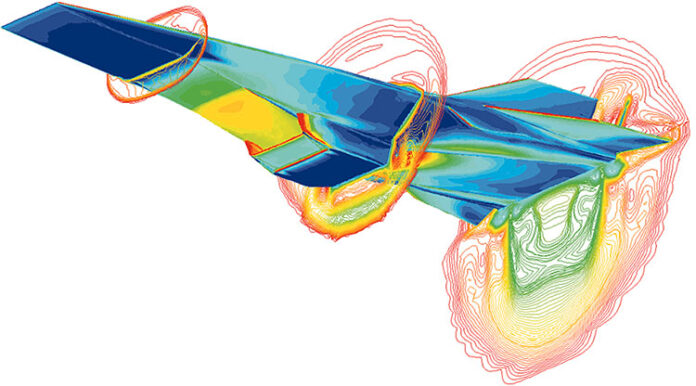The realm of space exploration constantly pushes the boundaries of human ingenuity, seeking to achieve greater speeds and traverse vast distances efficiently. Hypersonic travel, characterized by velocities exceeding five times the speed of sound, presents an exciting frontier in space exploration. Drawing lessons from aerospace advancements in supersonic flight, the development of hypersonic spacecraft promises unprecedented capabilities for faster, more efficient, and extended space missions.
Aerospace engineering has long been fascinated with achieving supersonic speeds within Earth’s atmosphere. The pursuit of supersonic flight led to iconic aircraft like the Concorde, highlighting the challenges and achievements of breaking the sound barrier. Lessons learned from these endeavors are now contributing to the development of hypersonic spacecraft capable of navigating the extreme conditions of space at incredible velocities.
The key to achieving hypersonic speeds lies in innovative propulsion systems and aerodynamic designs. Similar to the challenges faced in supersonic aircraft design, hypersonic spacecraft require propulsion technologies capable of withstanding immense heat and pressures while providing efficient thrust for extended missions.
Materials science plays a pivotal role in enabling hypersonic spacecraft. Aerospace engineers are exploring advanced materials capable of withstanding the extreme temperatures experienced during hypersonic flight, ensuring structural integrity and safety throughout the spacecraft’s journey.
Aviation’s pursuit of efficiency in supersonic flight has parallels with the quest for fuel-efficient propulsion systems in hypersonic spacecraft. Advancements in propulsion technologies, including scramjets and innovative engine designs, aim to optimize fuel consumption while achieving and sustaining hypersonic velocities in space.
Aerodynamic considerations are critical for hypersonic spacecraft design, reminiscent of the emphasis on aerodynamics in supersonic aircraft. Streamlined shapes and thermal protection systems are vital to minimizing drag and heat buildup, enabling spacecraft to maintain stability and integrity during hypersonic travel.
The challenges of controlling and maneuvering hypersonic spacecraft draw from aviation’s experiences in developing control systems for supersonic flight. Maneuverability, navigation, and guidance systems for hypersonic craft require sophisticated control mechanisms to ensure precision and safety during high-speed travel.
Testing and validation, fundamental in aviation’s development of supersonic aircraft, are equally crucial for hypersonic spacecraft. Ground-based simulations and test flights in Earth’s atmosphere provide insights into the behavior and performance of hypersonic systems before deploying them for space missions.
The complexities of transitioning from hypersonic flight within Earth’s atmosphere to space environments present unique engineering challenges. The shift from aerodynamic lift to reliance on thrusters for maneuvering and trajectory adjustments necessitates innovative solutions derived from aerospace and space technologies.
The lessons learned from aerospace’s supersonic endeavors pave the way for hypersonic spacecraft capable of revolutionizing space exploration. The advancements in materials, propulsion, aerodynamics, and control systems gleaned from supersonic flight contribute significantly to overcoming the challenges of achieving sustained hypersonic velocities in space.
Hypersonic spacecraft hold the potential to transform space missions, enabling rapid transit to distant celestial bodies, reducing travel time for interplanetary missions, and revolutionizing satellite deployment and space tourism. The application of lessons from aerospace is instrumental in unlocking the vast possibilities of hypersonic travel in space.
The collaborative efforts between aerospace engineers, space agencies, and industry partners mirror the synergies seen in supersonic aviation projects. This collaborative spirit fosters innovation and drives progress in developing hypersonic spacecraft, laying the groundwork for a new era of space exploration.
As advancements continue, hypersonic spacecraft represent a bridge between aerospace and space exploration, leveraging the knowledge and experiences garnered from supersonic flight to propel humanity further into the cosmos. The fusion of aerospace expertise with space technologies accelerates the journey towards unlocking the mysteries of space at unprecedented speeds.
The pursuit of hypersonic spacecraft embodies the human drive to push boundaries, explore the unknown, and venture beyond limitations. The culmination of lessons from aerospace’s supersonic achievements culminates in the quest to reach hypersonic speeds and beyond, charting a course towards a future where space exploration knows no bounds.
























